
Cell growth modeling review and recommendations for cultivated meat production
This study by GFI and BioFarm Designs reviews cell growth models for cultivated meat production, highlighting data gaps and research priorities to develop robust models that guide process development and cost reduction.
Access the reports
Modeling cell growth to enable cost-effective cultivated meat production
Cultivated meat has the potential to deliver a more sustainable and resilient protein supply, but scaling production cost-effectively remains a major challenge. To capture economies of scale, it must be produced at unprecedented volumes — and predictive tools are essential to guide performance at those scales.
Computational models offer powerful ways to understand, predict, and optimize cultivated meat production, ultimately accelerating development and reducing costs. Several published techno-economic models (TEMs) of hypothetical large-scale processes have illuminated key cost drivers, but they rely on simplified assumptions rather than realistic predictions of performance.
Project focus
This project focuses on advancing more predictive, dynamic cell growth models. It proposes a modeling framework, reviews available data, highlights key gaps and priority research areas, and recommends new approaches. Together, these contributions lay the foundation for more robust and adaptable models to guide process optimization, cost estimation, and bioprocess design.
Report highlights
- 📊 Comprehensive review of cell growth models for cultivated meat, including empirical, structured, and energetics-based approaches.
- 🔍 Critical assessment of available data and identification of the most pressing gaps limiting current techno-economic models.
- 🚀 Research priorities and recommendations to guide more accurate, adaptable, and scalable process modeling.
- 🧪 Evaluation of advanced empirical, structured, and hybrid modeling approaches to capture metabolic flexibility, improve predictive power, and guide the design of scalable cultivated meat processes.
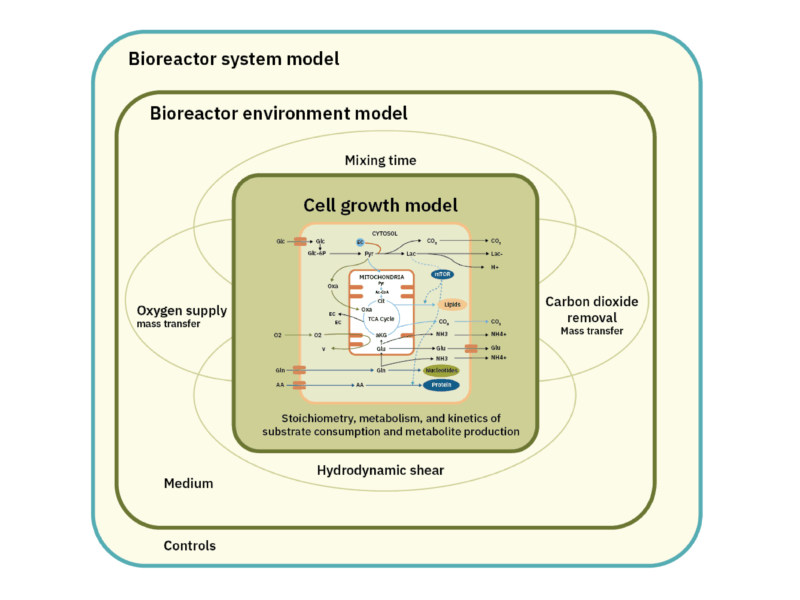
Performance modeling framework
Overview schematic of the performance model, consisting of three individual component models.
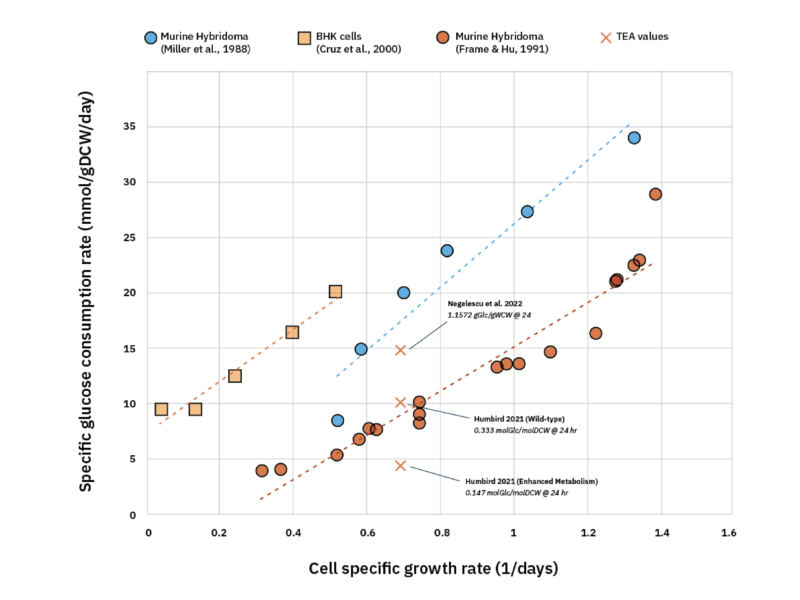
Glucose consumption increases with growth rate
Example of findings from the study report, showing how glucose consumption increases with growth rate across different cell lines and studies.
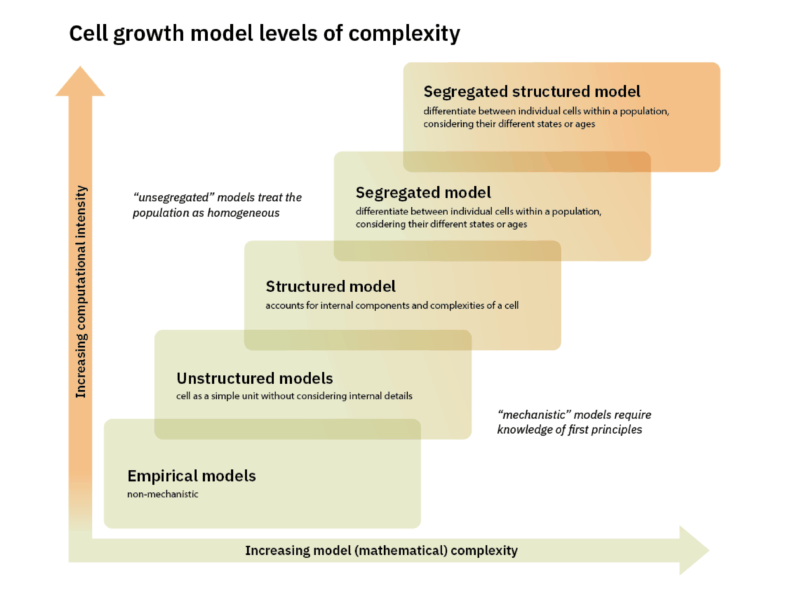
Comparison of common biological model types
Comparison of common biological model types. Empirical models are simpler but limited in scope, while structured, segregated, and hybrid models incorporate intracellular processes or population heterogeneity, increasing their complexity and predictive capability.
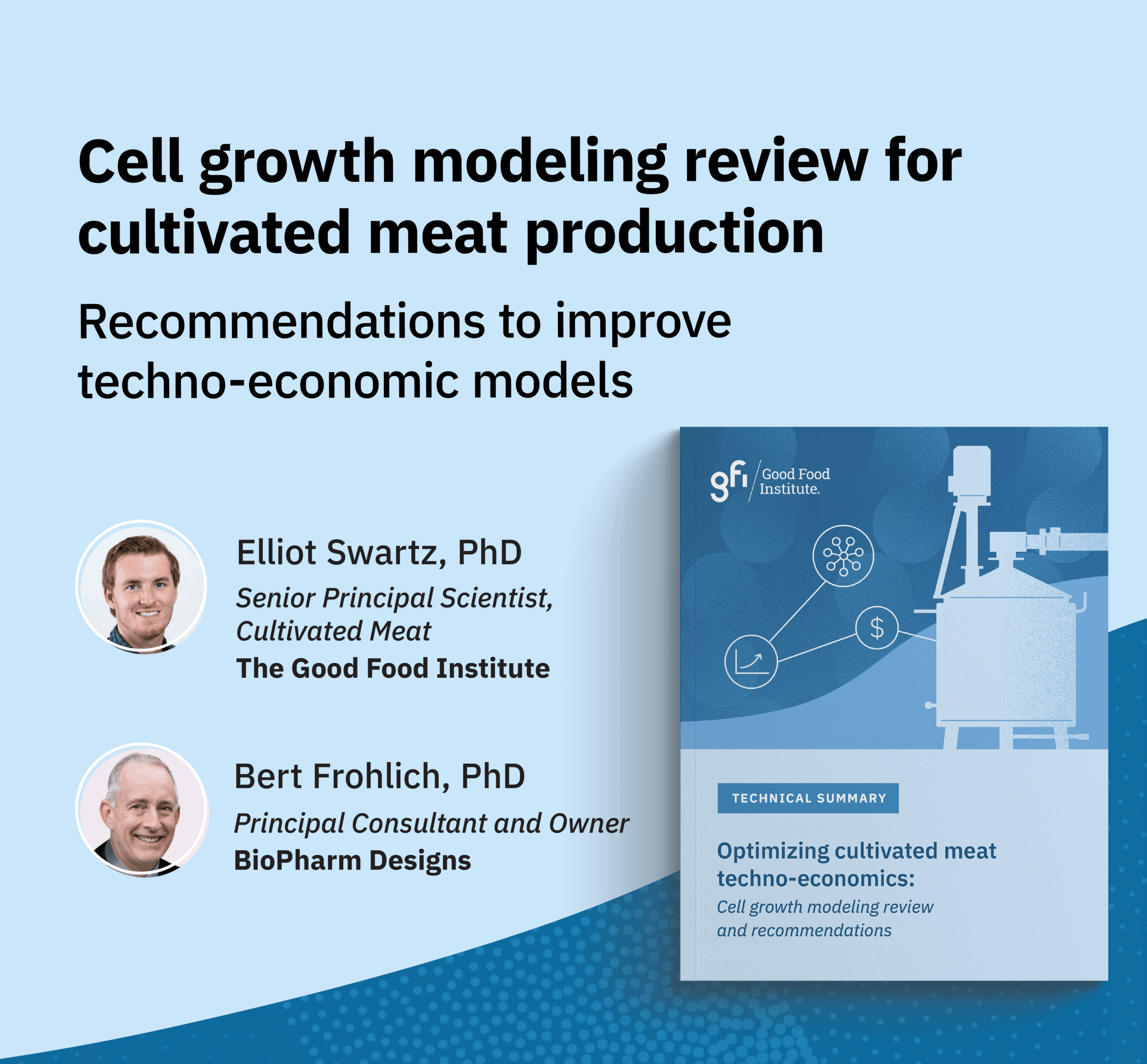
Watch our webinar
Hear directly from the report authors discuss what current data reveal, and the research priorities shaping more accurate and scalable techno-economic models for cultivated meat production.
Download the reports and data
Share your information to help us shape future content. We won’t contact you unless you opt in.
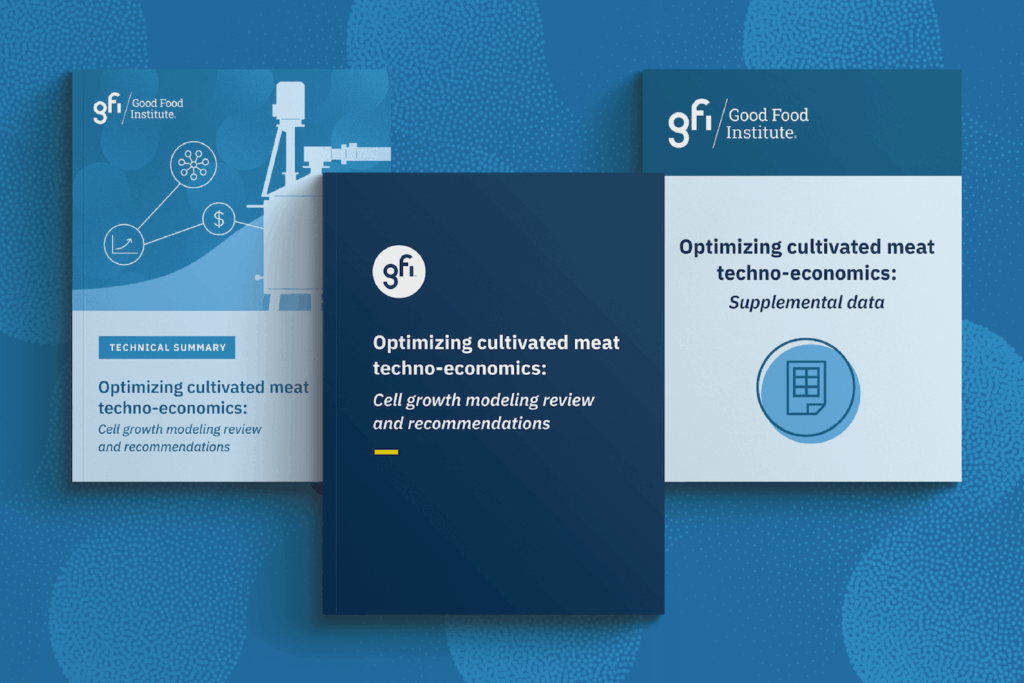
Downloads available:
- Technical summary
- Full technical report
- Supplemental data

Resource
Give us feedback on our report
We want your input! Use this form to submit feedback, corrections, additional insights, data, and your thoughts on our report.
Related resources
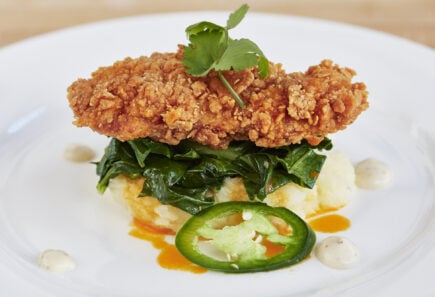
The science of cultivated meat
Learn about the science of cultivated meat and the challenges that must be addressed for commercial production.

Cultivated meat LCA/TEA report analysis
Recent studies show cultivated meat could have reduced environmental impacts and be cost-competitive with some forms of conventional meat.

Cell line development and utilisation trends in the cultivated meat industry
Discusses current trends in cell line development and utilization within the cultivated meat industry (2023).
Citation and DOI information
Harsini, F. Frohlich, B, and Swartz, E. Technical summary for optimizing cultivated meat techno-economics: Cell growth modeling review and recommendations. Washington D.C.: Good Food Institute. 2025. https://doi.org/10.62468/ohpu7135
Frohlich, B., Harsini, F., and Swartz, E. Optimizing cultivated meat techno-economics: Cell growth modeling review and recommendations. Washington D.C.: Good Food Institute. 2025. https://doi.org//10.62468/xcjx6040.
